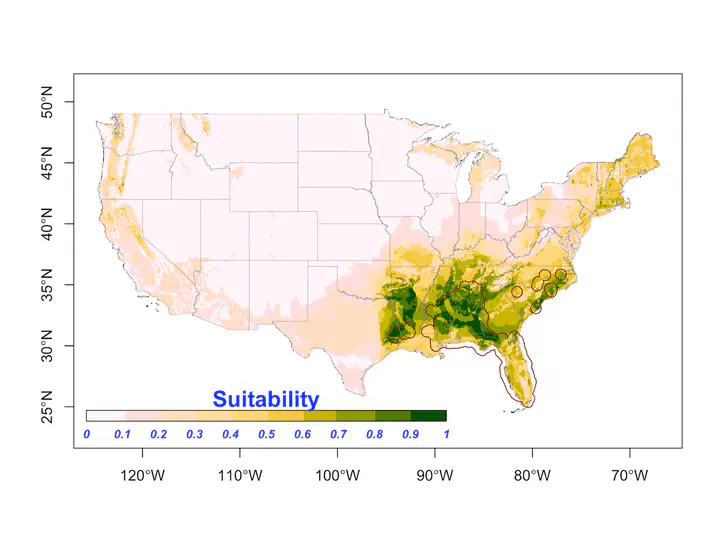Scaling up experimental stress responses of grass invasion to predictions of continental‐level range suitability

Abstract Understanding how the biological invasion is driven by environmental factors will improve model prediction and advance early detection, especially in the context of accelerating anthropogenic ecological changes. Although a large body of studies has examined how favorable environments promote biological invasions, a more comprehensive and mechanistic understanding of invasive species response to unfavorable/stressful conditions is still developing. Grass invasion has been problematic across the globe; in particular, C4 grass invaders, with high drought tolerance, adaptations to high temperatures, and high water use efficiency, could become more severe. Here, we conducted a rigorous microcosm experiment, with one of the most damaging invasive C4 grass - cogongrass (Imperata cylindrica), to explore how cogongrass responds to soil water and nutrient stress. We further integrated the results of the microcosm study with a species distribution model to (1) corroborate greenhouse results with field observations and (2) validate the robustness of our findings at sub-continental scales. Both the microcosm experiments and species distribution model agreed that soil water stress had a stronger impact on cogongrass than the nutrient one. New vegetative growth of cogongrass continued to be inhibited by the prior water stress. The significant water effect on cogongrass total biomass was supported by the finding that both allometric and biochemical traits of cogongrass did not show significant responses to the changes in water treatment. Different to the conventional wisdom that nutrient enrichment plays a bigger role in facilitating biological invasions, this study highlighted the possibility that water conditions may have a more substantial effect on some aggressive invaders. Therefore, an important implication of this study on biological conservation is that field managers might take advantage of the negative effect of global drought on some invasive species to increase the efficiency of their controlling efforts because invasive species may become more vulnerable under drought effect.
How to cite. B. Zhang et al., Scaling up experimental stress responses of grass invasion to predictions of continental‐level range suitability. Ecology. 102, e03417 (2021).